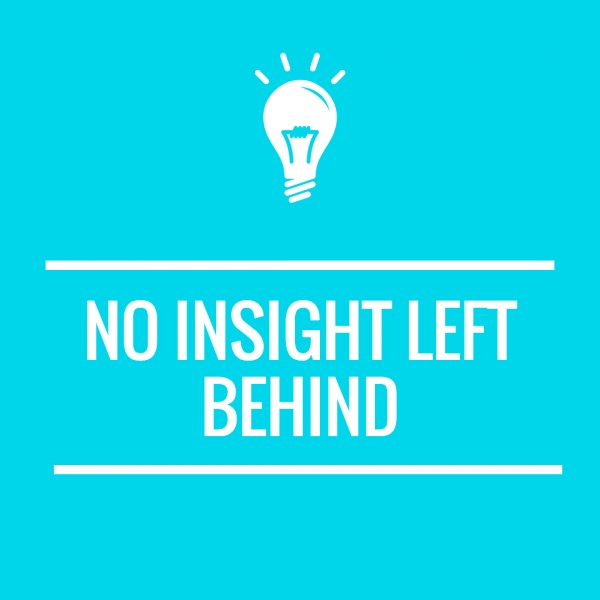A few highlights from this blog post:
========
First, in case you are wondering, I chose the title for this article inspired by the saying – “No child left behind.”
A few days ago one of my mentees posed a question:
What would be a strategy that will most likely provide me an unfair advantage in the coming year?
Rather than making up an answer right away, I chose to reflect on it a bit – jotted down a few ideas, tested several of them with a few smart friends and finally chose this one.
Yes, this is my final answer (as of now at least)
The strategy is to operate with a mindset to not leave any insight behind.
I was operating with the above principle for ages, but someone had to ask a question to bring that to the surface.
Insights are plenty
Finding knowledge and insights is easy.
You can find them via smart friends.
You can find them at libraries.
You can find them on the web.
You can find them at conferences.
I can go on and on.
If collecting insights is your quest, you are in luck.
But, you rarely get ready-made answers.
However, internalizing those insights and applying them to a specific context is hard work.
It requires serious effort.
In most cases, people encounter an insight, smile and walk away from it.
Or, they walk towards finding the next insight.
Sometimes the quest may simply be to look for ready-made answers that will precisely tell you exactly what to do. You may be looking for the available options to deal with a particular situation AND you probably want to know which is the best among available options.
The problem?
It rarely works that way
There is magic in application
They say ideas are dime a dozen for a reason.
Insights are the same.
If you don’t adapt and apply the insights in your context, they are reduced to some form of intellectual entertainment.
Mostly useless.
However, adapting and applying is magical because if you succeed, you can reap the rewards from the results and if you don’t succeed, you learn and grow.
There is a limit.
Of course, you can’t possibly try to take advantage of every insight you encounter.
Nobody can.
It’s not even practical.
So, it seems like we have a dilemma if you want to operate with a mindset that you don’t want to leave any insight behind as it’s practically impossible to make use of every insight you encounter.
Well, not really a dilemma if you come at it from a different vantage point.
The game-changing move
If you expand the space of possibilities for a new insight to projects of people that matter most to you, more magic happens.
Here is a simple process to consider:
A. Go one level deep
Every time you encounter an insight, rather than rushing to the next one, stop and reflect on other use cases for the insight.
What other places can this insight bring a positive impact?
Just engaging in this part of the exercise alone will yield more benefits than simply consuming an insight.
B. Search for relevant projects
Now, search for relevant projects within the network of people that matter most to you that might benefit from this newly encountered insight. If you have a good handle on what projects your network is engaged in, this should be an easy thing to do.
C. Contextualize
This step is important. Rather than just throwing an insight to someone in your network, walk the extra mile – contextualize the relevance of the new insight to their project(s).
If that insight was relevant to multiple projects for multiple people in your network, you have to do this step multiple times.
D. Reach out
Now, reach out to each one of the people in the above list to share the insight in the context of one or more of their projects. The medium (in-person, phone, email, etc.) is not as important as the completeness ( insight + context ) of sharing.
If you get this part right, the other person will feel they received a gift from you.
E. Repeat
Depending on your time availability, you can repeat this for as many insights you encounter.
Here is an example
The first I read a paper on effectuation ( download PDF ) by Prof. Saras Saraswathy, I fell in love with it. While traditional thinking is all about assembling the right resources to reach your goal, effectual thinking is about finding the right goals to reach with the already available resources. Good entrepreneurs need both kinds of thinking.
When I see someone in my network will benefit from Prof. Saraswathy’s work, all it requires is for me to send this PDF with a few lines to set the context.
It’s that simple.
Over the last five years, I must have sent this out to a few hundred budding entrepreneurs.
Insights are same, the contexts are different.
Practicing the “no insight left behind” concept is also a gift you are giving yourself. You sharpen your thinking every time you apply an insight to make it work in multiple contexts.
This practice will also the fastest way to boost your practical generosity quotient (PGQ) – a short video presentation on that topic is below
